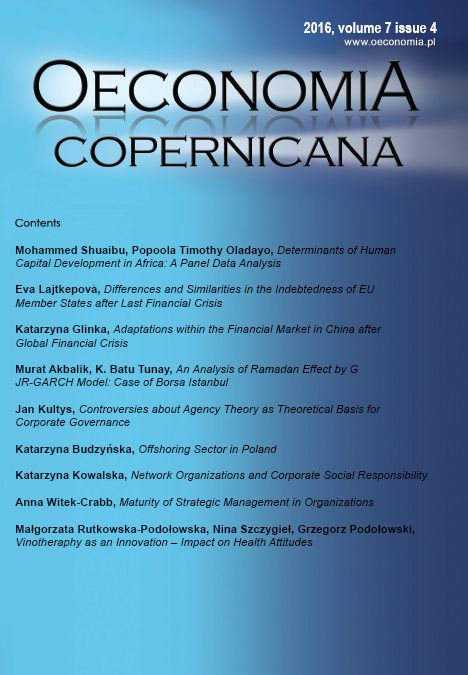AN ANALYSIS OF RAMADAN EFFECT BY GJR-GARCH MODEL: CASE OF BORSA ISTANBUL
AN ANALYSIS OF RAMADAN EFFECT BY GJR-GARCH MODEL: CASE OF BORSA ISTANBUL
Author(s): Murat Akbalik, K. Batu TunaySubject(s): Economy, Supranational / Global Economy, Financial Markets
Published by: Instytut Badań Gospodarczych
Keywords: stock returns; anomalies; Ramadan effect; GJR-GARCH
Summary/Abstract: Although there are a lot of studies testing the calendar effect in BIST, there are limited numbers of studies testing the Ramadan effect. In this study, the period of 05 August 1997–24 October 2014 is tested by the GJR-GARCH(1,1) model on the basis of BIST 30, 100, all, second national, sectors and sub-sectors. In some of the models, the dummy variable of Ramadan did not have significant coefficients. In the models that provide significant value of the dummy variable of Ramadan, coefficients of this variable are negative. This shows that, in the Ramadan, return rates of the second national index, chemistry, and manifacturing, textile, trust companies sectors are affected negatively. Any significant result could not be found whether Ramadan has effect upon other sector indices. Findings are in the direction that even if the month of Ramadan generally doesn’t increase the average return, it makes a positive impact on the market by reducing the volatility of returns.
Journal: Oeconomia Copernicana
- Issue Year: 7/2016
- Issue No: 4
- Page Range: 593-612
- Page Count: 20
- Language: English

